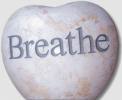Relaxation
 Relaxation is allowing physical and/or mental tension to be released. Tension is the body's natural response to threat, part of the body's alarm or survival mechanism. It can be a very useful response, but a lot of the time, we don't need this tension, so it's okay to learn to let it go, and learn some relaxation skills.
Relaxation is allowing physical and/or mental tension to be released. Tension is the body's natural response to threat, part of the body's alarm or survival mechanism. It can be a very useful response, but a lot of the time, we don't need this tension, so it's okay to learn to let it go, and learn some relaxation skills.
Healthy living is a matter of balance. Relaxation is part of the balancing process alongside other aspects of your lifestyle such as what you eat, your physical activity and how you handle stress. Learning to relax takes practice, as with learning any new skill.
It is a great help to learn a relaxation technique, to help us unwind and bring our tensions and anxiety under control. There are several relaxation techniques as you scroll down this page.
Practise your chosen technique regularly so you can be more prepared for the more stressful times. You might want to start with the MP3 guided relaxation downloads.
How Relaxation Helps
- Reduces tiredness when you can manage everyday life without excessive tension
- Improves performance in work, sport or music through self awareness and control of tension
- Reduces pain which can occur as a result of tension e.g. headaches and backache. Relaxation can help you to cope by raising your pain threshold and reducing the amount of pain
- Coping with stress. Relaxation helps you to reduce the effects of stress and to breathe effectively
- Improves sleep by allowing you to be calm and peaceful
- Improves self-confidence by increasing your self-awareness and ability to cope with daily life
- Improves personal relationships. It is easier to relate well to other people when you are relaxed and self-confident
Relaxation And Stress
Tension is the opposite of relaxation. We tense when we feel anxious or stressed, it's our body's natural response to feeling threatened, the alarm system which helps us deal with danger: our breathing rate increases, as does our blood pressure, heart rate, muscle tension, sweating, state of mental arousal and adrenaline flow. A lot of the time, we don't need those survival responses, so relaxation helps to decrease that tension and adrenaline response, to let it go. 
Breathing and Relaxation
Our out-breath releases tension in the chest muscles and allows all muscles to release their tension more easily. Breathing is far more effective when we use our diaphragms, rather than with the chest muscles.
If you look at animals or babies when they lie sleeping, notice that it is their belly that moves as they breathe at rest, and not their chest.
Mindful Breathing
Colour Breathing
Practise Belly Breathing
Sit comfortably in a chair and place your hands on your belly, with your middle fingertips just slightly touching. Now breathe in deeply and notice how your finger tips move apart a little. That shows you are breathing effectively with your diaphragm. You might need to practise this! When you are feeling tense and hoping to relax, try breathing out a little bit more slowly and more deeply, noticing a short pause before the in-breath takes over (there is no need to exaggerate the in-breath, just let it happen). You might find it useful to count slowly or prolong a word such as ONE or CALM to help elongate the out-breath a little (to yourself or out loud).
When you are feeling tense and hoping to relax, try breathing out a little bit more slowly and more deeply, noticing a short pause before the in-breath takes over (there is no need to exaggerate the in-breath, just let it happen). You might find it useful to count slowly or prolong a word such as ONE or CALM to help elongate the out-breath a little (to yourself or out loud).
There are various ways in which to achieve relaxation, most use breath control in some way. Whichever method you choose, regular practice will help. Some examples are:
- Progressive Muscle Relaxation: tense/relax muscular relaxation
- Meditation
- Mindfulness
- Mindful Breathing
- Guided Imagery Or Visualisation
- Autogenic Training. Mental exercises to link body and mind to bring about relaxation
- Alexander Technique. Teaches the importance of posture, which improves mental and physical wellbeing.
- Bio Feedback. The self-regulation of bodily functions, e.g. Slowing heart rate
Massage - Mindful Breathing
-
Aromatherapy
-
Physical Activity
- Tai Chi
- Yoga
- Music (music is very personal, so use whatever helps you relax) either used alone, or with any of the above methods.
Simple Breathing Exercise
This breathing exercise takes only a few seconds, no matter where you are. It is particularly helpful at stressful times, and also practise it at regular intervals throughout the day.
- Take a deep, slow breath in and hold it for 5 seconds. Feel your belly expand as you do this.
- Breathe out slowly, to a count of 5.
- Breathe in again, make every breath slow and steady and exactly the same as the one before it and the one after it.
- As you breathe out, concentrate on expelling ALL the air in your lungs.
- If you are alone, you could make a noise like WHOO as you do this to help you feel the air being let out.
- Keep the outbreath going for as long as you can. Keep it relaxed for a few seconds before you inhale again.
Mindful Breathing
Relaxation & Visualisation MP3 downloads
Quick Relaxation
Wherever you are (e.g. in the car, supermarket, awaiting appointment etc)
- STOP
- SHOULDERS DOWN
- TAKE 2 OR 3 SLIGHTLY SLOWER, SLIGHTLY DEEPER OUT-BREATHS (just let the in-breath happen) and notice the sensations of breathing in your belly
- CARRY ON WITH WHATEVER YOU WERE DOING, BUT JUST A LITTLE SLOWER
Colour Breathing
For a fast and effective calming technique in a stressful situation, visualise the colour blue. Visualise breathing in that blue calm, and breathing out red tension.
- Sit in a comfortable chair ( or lie on the floor, or on a bed).
- Ensure you will not be disturbed by other noises.
- If you become aware of sounds - just try to ignore them and let them leave your mind just as soon as they enter.
- Make sure the whole of your body is comfortably supported - including your arms, head and feet. (Rest your arms on the arms of the chair, with your feet flat on the floor)
- Close your eyes. Feel the bed or chair supporting your whole body - your legs, your arms, your head.
- If you can feel any tension, begin to let it go.
- Take 2 slow and deep breaths, and let the tension begin to flow out.
- Become aware of your head - notice how your forehead feels.
- Let any tension go and feel your forehead become smooth and wide.
- Let any tension go from around your eyes, your mouth, your cheeks and your jaw. Let your teeth part slightly and feel the tension go.
- Now focus on your neck - let the chair take the weight of your head and feel your neck relax. Now your head is feeling heavy and floppy. Let your shoulders lower gently down. Your shoulders are wider, your neck is longer.
- Notice how your body feels as you begin to relax.
- Be aware of your arms and your hands. Let them sink down into the chair. Now they are feeling heavy and limp.
- Think about your back, from your neck to your hips. Let the tension go and feel yourself sinking down into the chair. Let your hips, your legs and your feet relax and roll outwards. Notice the feeling of relaxation taking over.
- Think about your breathing - your abdomen gently rising and falling as you breathe.
- Let your next breath be a little deeper, a little slower...
- Now, you are feeling completely relaxed and heavy.
- Lie still and concentrate on slow, rhythmic breathing.
- When you want to, count back from 5 to 1 and open your eyes.
- Wiggle your fingers and toes, breathe deeply and stretch.
- Pause before gently rising.
 PROGRESSIVE MUSCLE RELAXATION mp3Female voice, with music.
PROGRESSIVE MUSCLE RELAXATION mp3Female voice, with music.
 PROGRESSIVE MUSCLE RELAXATION mp3Male voice, with music.
PROGRESSIVE MUSCLE RELAXATION mp3Male voice, with music.
 MINDFUL BREATHING mp3Female voice, with music.
MINDFUL BREATHING mp3Female voice, with music.
22 mins.
 MINDFUL BREATHING mp3Male voice, with music.
MINDFUL BREATHING mp3Male voice, with music.
More Self Help & Relaxing MP3 Downloads
![]()
Related Links
- Meditation
- Mindfulness
- Mindful Breathing
- Guided Imagery Or Visualisation
- Autogenic Training. Mental exercises to link body and mind to bring about relaxation
- Alexander Technique. Teaches the importance of posture, which improves mental and physical wellbeing.
- Nature As Therapy
- Bio Feedback. The self-regulation of bodily functions, e.g. Slowing heart rate
Massage - Mindful Breathing
- Aromatherapy
- Physical Activity
- Tai Chi
- Yoga
- Music (music is very personal, so use whatever helps you relax) either used alone, or with any of the above methods.
Useful links
Guided Imagery Or Visualisation
Music (music is very personal, so use whatever helps you relax) either used alone, or with any of the above methods.




















